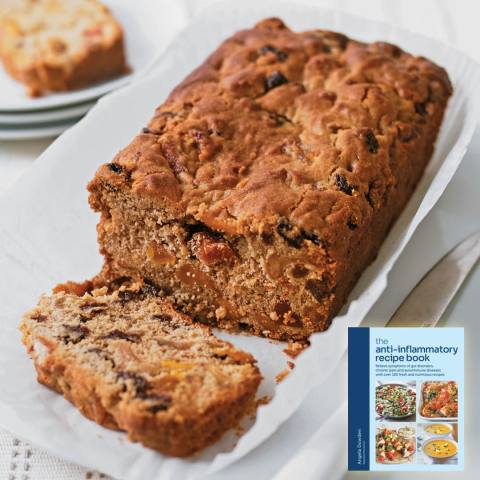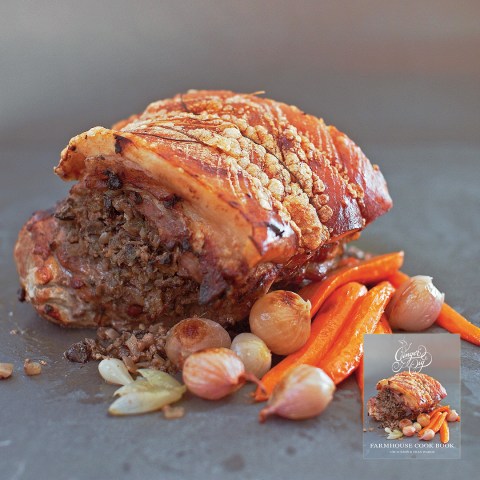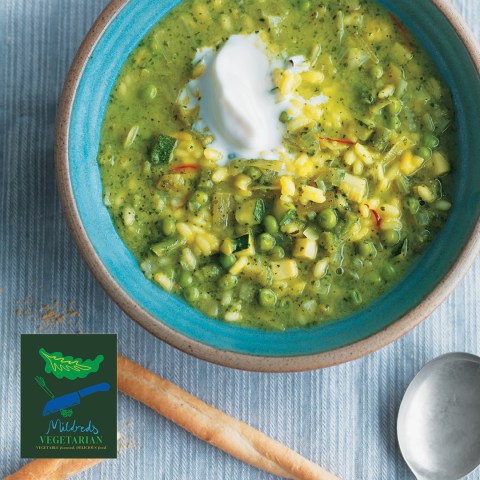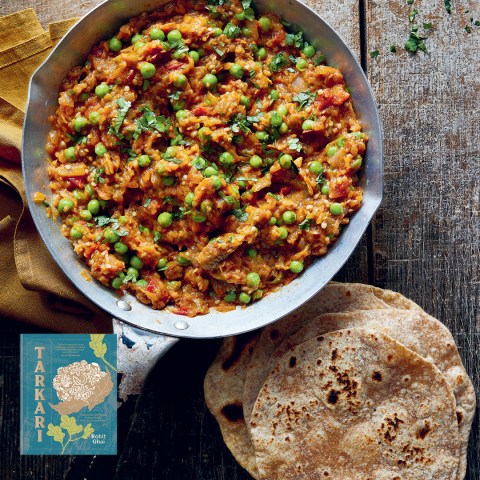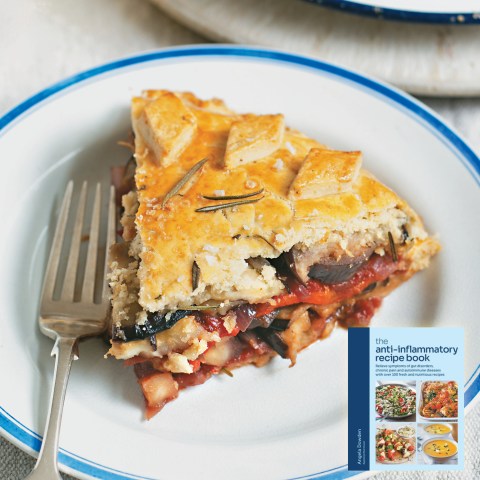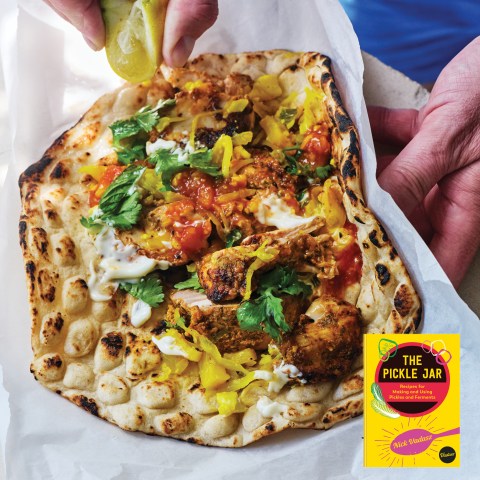Linzer Torte (V) from German Baking
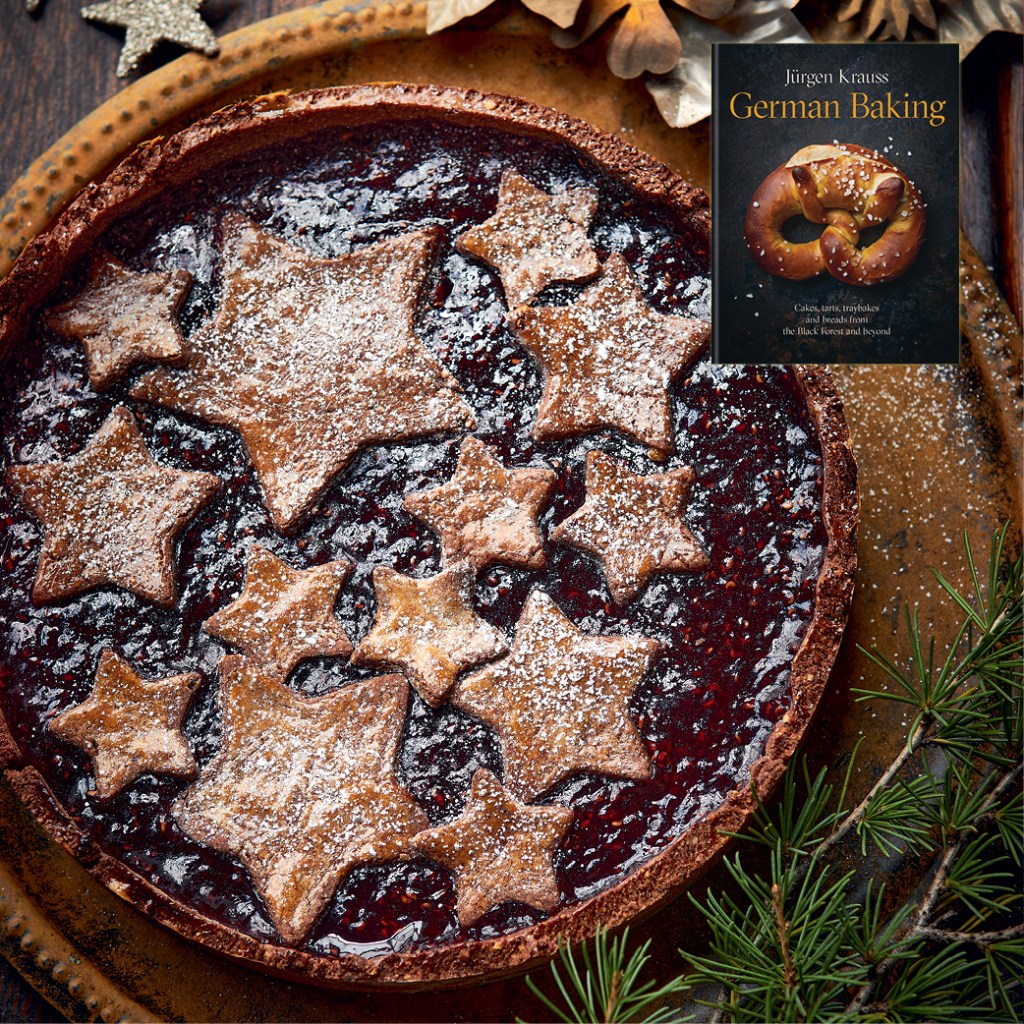
“Every year at the end of November the Christmas baking season was kickstarted in our house by making Linzer Torte. The small kitchen filled with the smell of cinnamon, cloves, kirsch and freshly ground nuts. My brother and I were always heavily involved. Under our mother’s direction we measured the ingredients, ground the nuts and made the dough. This is the best-tasting raw dough you can get! The usual technique of making this short dough was a bit intimidating to me: the flour, cocoa powder, spices, nuts and sugar are piled on the table, the butter cubes are sprinkled on top. Then a well is made in which the egg and the kirsch go. Using a big chef ’s knife, the mountain is then repeatedly cut and re-erected. It is a huge credit to my mother that she taught us this method and we never came to harm. This recipe can be made with the usual, less dangerous, all-in-one method, which I recommend below. This version of Linzer Torte unfolds its full flavour after a couple of weeks in an airtight container.” Jürgen Krauss, author of German Baking
240g plain flour, plus extra for dusting
20g cocoa powder
200g unsalted butter, cold, cubed, plus extra for greasing
175g caster sugar
200g nuts, ground (hazelnuts or almonds, with skin on)
1 ½ teaspoons ground cinnamon
¼ teaspoon ground cloves
1 medium egg
1 tablespoon kirsch
400g raspberry jam
1 egg yolk for glazing
Icing sugar for dusting
Put all the ingredients, except the jam, egg yolk and icing sugar, into a big bowl. Mix and knead swiftly with your hands until the dough holds together well. Make a ball, wrap in clingfilm and let it rest in the fridge for at least 2 hours.
Once the dough has rested, preheat the oven to 175°C fan/gas mark 6. Grease a 25cm springform or sandwich tin.
Reserve one-third of the dough for decorations. On a lightly floured surface, roll out two-thirds of the dough until about 1cm thick and slightly bigger than the tin.
Transfer the dough to the tin. The dough is quite brittle, and tears are not unusual. Make sure there is a rim all the way round, about 2cm high. You can cut any excess and use it to patch up the rim in other places. Prick the bottom of the cake with a fork.
Apply some decoration to the rim. I use two forks, one in each hand, with the rounded sides facing each other, grab a 3cm stretch of the rim and squeeze it between the forks. Repeat all the way around the rim.
Fill the cake with jam – you should have an even layer, about 4mm thick.
Roll out the remaining one-third of the dough until about 4mm thick for the decorations. If you want to make the classic lattice pattern, cut the dough into strips and place them on the jam. You can also decorate the cake with star or leaf patterns or other geometric ideas. Using a brush, glaze the decorations and rim with the egg yolk, trying not to get egg yolk onto the jam.
Bake for 30–40 minutes; watch the colour of the rim and the egg yolk – the colour of the rim should be brown, like milk chocolate.
Leave to cool for about 10 minutes, then remove from the tin and let cool on a wire rack. Dust with icing sugar to serve.
This cake tastes great fresh, but it improves greatly over time, stored in an airtight container in a cool place.

